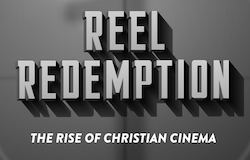The Best of Pictures: No Country for Old Men (2007), by Josh Long
24 Jun
 NO COUNTRY FOR OLD MEN (2007)
NO COUNTRY FOR OLD MEN (2007)
Written and Directed by: Joel and Ethan Coen
Starring: Josh Brolin, Javier Bardem, Tommy Lee Jones
The west Texas landscape is harsh, rough, and unforgiving. This makes it the perfect setting for a world gone wrong. A world that may have once been vibrant and beautiful, but is now cold and dangerous. It’s a world fallen from what it was meant to be.
No Country for Old Men centers around three principal characters. A blue-collar Texan who discovers a load of drug money, a cold-blooded killer sent in to find the money, and the weathered lawman 1 who follows afterwards trying to sort out the mess. As the everyman character (Llewelyn Moss, played by Josh Brolin) gets further embroiled in the intrigue, his situation seems more and more hopeless. The man following him seems relentless, remorseless, and unstoppable. The old sheriff (played by Tommy Lee Jones) follows behind both of them, ever more unable to grasp the scope of violence he sees.
Cormac McCarthy’s 2 characters all seem to live inside a world of dead silence. There is always a sense of potential violent energy beneath the surface. Things may seem calm, but they’re never peaceful; there is evil lurking and it’s always nearer than you think. In No Country for Old Men, evil is personified in the character of Anton Chigurh, played brilliantly by Javier Bardem 3. This is one of the most fascinating characters ever played on film, an enigma in his sense of “morality” when it comes to murder. But then again, is he a murderer at all? Is he the personification of society’s evils coming home to roost? Is he a spirit somehow released by the sins of this world, a Frankenstein created through man’s lust for power through violence?
Tommy Lee Jones’ sheriff comes out almost as the central character of the story, with narration at the beginning (and at the end in a way). The levels to his character make him an equally deep, if not as immediately penetrating character as Chigurh. He is a man who has seen it all – he’s been trying to bring order to his little world for as long as he can remember, but is internally frustrated with the way that things spin continuously out of control. His elderly cousin puts it best in a haunting scene: “You can’t stop what’s comin’.” The sherriff’s monologues at the close of the film are beautifully told metaphors for the struggle he’s gone through, and the unanswered questions they raise are a poignant and fitting ending.
I’m confident that this will be seen as one of the great films of this decade. The story is epic, but in its theme more than in its plot. The plot is relatively small scale and simple, whereas the themes delve deep into the nature of good and evil. This is truly one for the post-modern era, because while we see undeniable evil, its nature, its origin, and our responsibility are all blurry areas.
The Coen Brothers have always ranked among my favorite directors, partially due to their aesthetic restraint – the pacing is never rushed to force an emotional response. This is a story that could have easily been turned into a speedy shoot-em-up, but the Coens’ style gives it the weight that McCarthy’s book necessitates. And even though it isn’t the Midwest, they’re still in their element in small-town America 4. Since they’re not Hollywood born and bred, they bring such a true sense to every minor character. The woman in the trailer park office, the old man at the gas station – each one seems to have been born naturally of the story. These people couldn’t belong anywhere else.
Also to be noted is Roger Deakins’ cinematography. He’s one of the greats, for certain, and his tenuous style matches perfectly with the Coens’ sense of restraint. The look itself feels like a bomb ready to blow. I have no doubt we are seeing the terrain just as the book’s author saw it in his mind’s eye.
In comparison to the other films of the year, this is a solid winner, if not an absolute stand-out winner. While there were other compelling films in the running that year (There Will Be Blood notable among them), No Country for Old Men hits us the most on a gut-level, and performs a fascinating balancing act between profane and sublime. While I think that comparison between books and the films they are based on are usually inane (they’re different art forms, one can’t expect them to be the same, so the book can never be “better,” it’s apples and oranges), it must be noted that this film captures the essence of the book in a way we rarely see. The tone, the attitude, the performances, all seem to have merely stepped off of the page. And that, my friend, is good filmmaking.
I feel like there’s a great deal more to be said about this film, but maybe not by me, here. If you haven’t seen it, it’s absolutely worth investing the time. Although keep in mind, it deals with very heavy subjects, and in that it is dutifully brutal. It’s not one to be taken flippantly. Regardless, this film is one that certainly earned its “Best Picture” of the year, and a guidepost for American film in general. I hope that a new generation of filmmakers seeks to make more like it.
1 Random side note: I once met a guy named “Tex Law.” No foolin’.
2 He’s the author who wrote the book on which it’s based, but you knew that.
3 Not to beat a dead horse, because I’m sure you’ve already heard what a wonderful performance it was – but seriously, who else could have made anyone in that haircut scary? Anyone else might have looked like a sixties sunshine-pop singer bent on petulant revenge.
4 And I have to say, being born in Texas myself, it’s so nice to see the location approached more naturally, steering clear of the stereotypical “Texan” with a gun on each hip, spitting tobacco and saying things like “Yeehaw.”



No comments yet